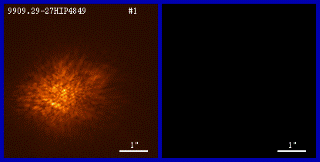Like my father, I went to Yale University for college, where I received a degree in physics. Unlike my father, I continued to study science and went to graduate school instead of going into business; I went on to do graduate work at Cambridge University in England, Princeton University, and Harvard University. The year I completed my PhD, the Second World War began with the invasion of Poland by Germany. Like a lot of scientists, I went to work for the government to support the war effort. My secret war work was to work on SONAR technology that is used to find objects under water.
After the war I went back to Yale as a professor but soon ended up at Princeton where I was appointed the director of the Princeton Observatory and chairman of the astrophysics department. While at Princeton I followed the development of new telescopes.
Astronomers built bigger and bigger telescopes over the past 350 years, and they made wonderful discoveries. Galileo completely changed our view of the Universe, from Earth-centered to Sun-centered, with a book about his work with his effective inch-sized telescope. He also explained the appearance of the Milky Way. Herschel further mapped the Milky Way using his 19-inch and 48-inch telescopes and discerned the elements of its flattened shape, though he did not know about the stars that were hidden by dust, and hence missed the full scope of the Galaxy in size. The many improvements in the mechanical and optical aspects of telescopes in the 18th century led to the century of "big-glass": the 72-inch Leviathan, the Yerkes 40-inch refractor, the Mt. Wilson 60-inch and 100-inch reflectors and the Mt. Palomar 200-inch telescope. These last three were used, two of them by Hubble, to develop the view of Universe as we now know it: many types of galaxies flung to the far reaches of an expanding space, some young and some old and some still forming.
But these telescopes could not reveal the details of galaxies too far out in the Universe; they only reached galaxies within less than 1% the volume of the Universe. To see the bulk of galaxies actually forming would require the removal of a last and major limitation of telescopes of modest size: all images observed with ground based telescopes are affected by the image blurring that occurs as the light travels the last tiny fraction of its journey from the galaxies through the atmosphere of the Earth. The properties of the atmosphere cause photons to randomly and slightly change their direction, making the images appear fuzzy.
At this point, I should explain that the transmission of light can be described in terms of packets of energy called photons or in terms of travelling waves. As with waves of water, one can think of a wavefront travelling through the atmosphere. At the top of the atmosphere, the air is not dense and turbulent so the wavefronts are parallel. Think of the individual packets of light as moving perpendicular to the wavefront. The wavefront is perturbed in the lower parts of the atmosphere, so the photons emerging from each part of the wavefront are moving in slightly different directions. A single-mirrored telescope can not, therefore, focus them all to the same point, hence the image is slightly blurred. From the ground one can try to correct for the atmospheric pertirbations, or one can simply put a telescope in space where there is no turbulence.


